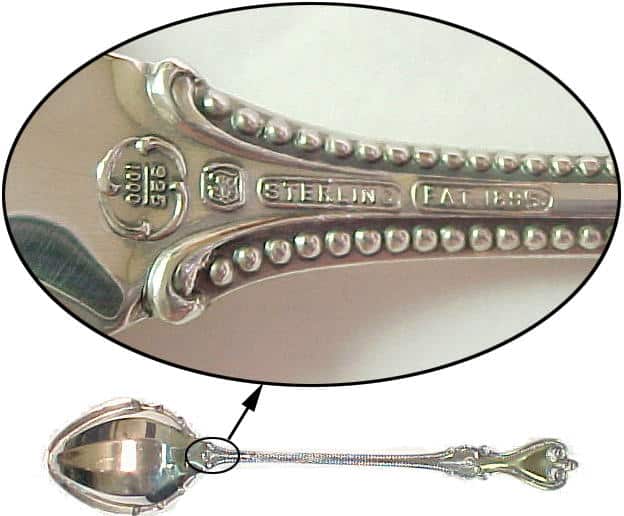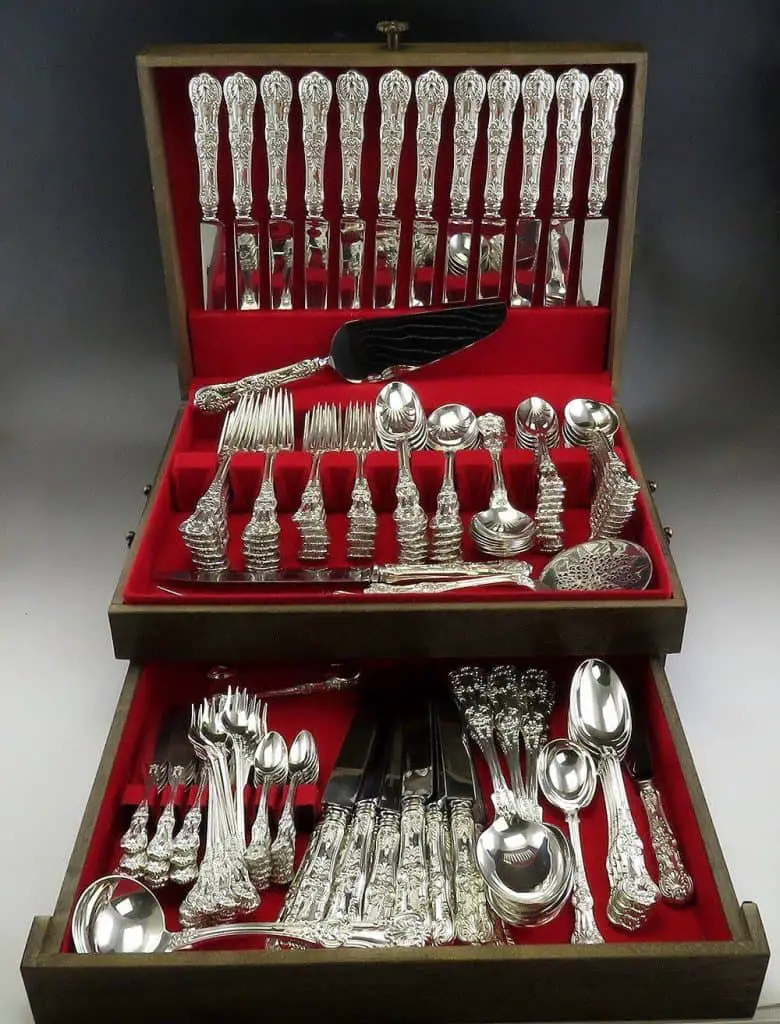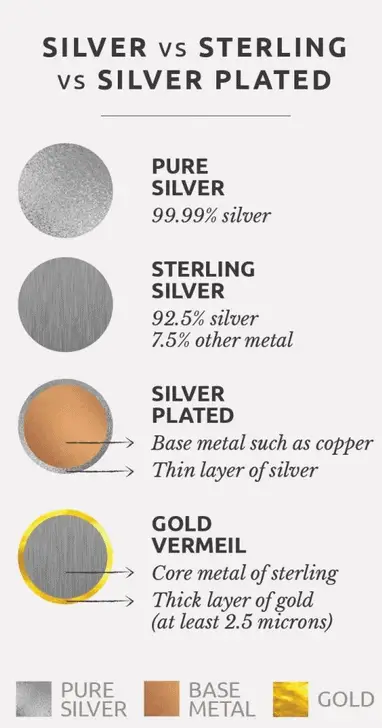In light of the current price of silver, it is not deemed cost-effective to recycle silver-plated flatware to harvest the precious metal. In the last article, we showed How to Buy Physical Silver and will now talk about silver value.
How Much is Sterling Silver Flatware Worth?
Sterling silver flatware will be worth $23.68 per ounce or $0.8 per gram in 2023. However, this minimum silverware value can be increased based on flatware rarity, age, design quality, and overall look. Sterling silver souvenir spoons can be sold for $5 and sometimes for $2500.

Sterling silver consists of 92.5% silver and 7.5% copper to give it its distinctive appearance. Stainless steel flatware always keeps its inherent silver worth and is typically valued as tableware in addition to its intrinsic silver value. Silverplate does not have an inherent silver value, only a decorative one. Therefore, trying to redeem silver would waste time and money due to refining its high expenses.
You should also know how much a silver tea set is worth. The value of a collection can vary widely depending on its age, creator, and the included pieces. For example, a sterling silver set can cost upwards of $1,000, whereas a silver-plated set would cost considerably less; however, the builder will decide. Likewise, trayless and multi-piece services have less value, whereas those with extra pieces have more excellent value.

How pure is sterling silver flatware?
Sterling silver consists of 92.5% silver and 7.5% addition (usually copper). Therefore, your flatware is silver STERLING if you have a mark of 925/of 1000 on the silverware. Generally, this mark is located on the underside of the flatware.

Sterling silver flatware will always have one of these markings. In addition, a magnet can be placed on the silverware to test if it attracts it.
How much silver is in sterling silver?
Sterling silver contains 92.5% silver and 7.5% copper, so it is not 100% pure silver. Copper is vital because silver elements are combined with copper to improve malleability and workability.
How much is a sterling silver spoon worth?
Silver sterling spoons can be worth from $5 to $2500. Most spoons cost less than $50, with a significant percentage selling for around $30. These spoons would retail for less than $50.
How much is a sterling silver fork worth?
The silver sterling fork can be worth from $8 to $3000. Most forks cost less than $60, with a significant percentage selling for around $30. If we compare equal weight and the same material, forks are usually a little more expensive than spoons.
How much does a silver teaspoon weigh?
Silver teaspoons usually weigh 25 grams or 0.88 ounces, and their weight range is from 22 to 28 grams.
What value does the silverware you acquired from your great aunt or grandmother provide you and your family? Can I expect to get a return on my investment? Silver’s age and method of manufacture have a great deal to do with its answer. Consider having it professionally assessed by a jeweler if you’re genuinely interested. Silver jewelry, such as Monica Vinader’s or Brighton’s silver rings, can be costly. However, silver flatware is a different story.
Silver flatware for eating was first used in England in the 12th century, and it was made from the same grade of silver as was used in coinage at the time. As a result, only members of the royal families could purchase such expensive things for several centuries. As a result, museums and collectors would highly prize silver flatware from this era for its historic, antique characteristics, even if it could be melted down.
Two major cultural shifts led to the widespread usage of silverware and cutlery. After Industrialization, these once-luxury products could be mass-produced. Meanwhile, personal fortunes grew in the upper-middle class. Silverware was raised to be more fashionable to show off new riches, gentility, and a better quality of life, beginning in the mid-1800s. If we didn’t, we’d have to devise another way to explain the necessity for the demitasse and the coffee spoons.
Ornate, finely crafted, and typically highly gilded silverware is handed down from this time. Then, though, things began to shift.
The Great Depression resulted in a reduction in the financial situation of the United States. It didn’t matter how much people wanted to spend on lovely goods; the money wasn’t available to buy them in many situations. Increased labor expenses forced wealthy families to rethink their 10-course dinner service and silverware polishing staff. A more popular and regular process was silver plating. It must be manually polished to retain ornate silver’s complex patterns; simpler styles became popular.
Per today’s standards, silver plates are exceptionally lightly plated. Therefore, they are electroplated at plating factories. The silver molecules are distributed in a liquid, and an electric current is sent through the item being plated.
So, exactly do you have stowed away in your closet? Most likely, unless your silver is “sterling” (92.5% pure) and not “coated,” it’s most valuable because of your emotional relationship to it or because it adds some designer “kitsch” to your home.
Is it safe to eat with sterling silver flatware?
Yes, sterling silver is safe to eat because copper usually covers it. Silver is also considered safe to consume because the EPA allows it even in drinking water if it does not exceed one milligram per liter of water. However, silver coated with lead is not recommended for use as eating silverware.
Can I wash silver-plated flatware in the dishwasher?
Yes, you can put silver-plated flatware in the dishwasher. However, it would help if you were careful not to scratch outside metal on flatware and avoid using acid detergent (for example, lemon acid) during washing.





